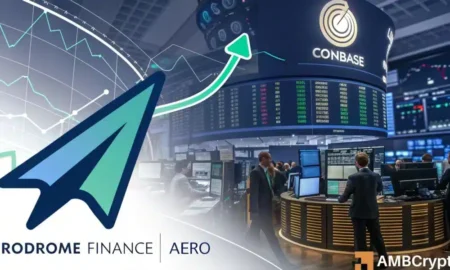The Current Bitcoin Market Dynamics: Analyzing Supply and Institutional Involvement
Bitcoin (BTC) has recently experienced a significant price rally, raising questions about the fundamental drivers behind this upward movement. Contrary to what some might perceive as increased demand fueling this surge, data indicates that the primary catalyst is a limited supply, particularly within the Binance trading ecosystem. With notable institutional investments and regulatory developments across different regions, the factors influencing Bitcoin’s trajectory have become more complex and multifaceted.
Supply Dynamics and Price Volatility
Recent analytics from CryptoQuant reveal that Bitcoin’s notable price increases can largely be attributed to a supply squeeze rather than an influx of new buyers. This is particularly evident on platforms like Binance, where dwindling supply levels create a thin order book. The data shows that between March and May, there were significant spikes in Taker Volume, suggesting that liquidity was coming back into the market after an April dip to around $75K. However, since June, the heightened demand indicated by these volume spikes has sharply declined, even as Bitcoin’s price reached new highs.
The lack of sellers in the market, as reflected by subdued Limit Order Volume, exacerbates this situation. Essentially, fewer sellers at current price levels create upward price pressure, potentially leading to volatile swings. While thin liquidity can push prices higher when demand exists, it also renders the market susceptible to abrupt downward movements if significant sell orders materialize. This dynamic underscores the importance of monitoring the supply side closely.
Institutional Investment: Harvard Takes the Lead
Adding a layer of institutional credibility to Bitcoin is Harvard University’s recent commitment of $116.6 million to BlackRock’s IBIT Bitcoin ETF. This investment positions Bitcoin as the university’s fifth-largest equity holding, surpassing even tech giants like Alphabet. Interestingly, this investment comes at a time when the overall sentiment surrounding Bitcoin ETFs has been less than buoyant, particularly during July when inflows lagged behind expectations.
Despite experiencing a soft patch, with BlackRock’s Ethereum fund briefly outperforming IBIT, Harvard’s substantial investment indicates a growing institutional confidence in Bitcoin’s potential. It demonstrates that major players are still willing to allocate serious capital into Bitcoin assets, highlighting the underlying belief that the cryptocurrency market holds significant long-term value.
Japan’s Stalled Crypto ETF Aspirations
Conversely, the landscape for cryptocurrency ETFs in Japan remains murky and uncertain. While U.S. institutions like Harvard pivot toward Bitcoin investment, Japan’s efforts to launch its first crypto ETF have encountered significant regulatory delays. SBI Holdings, a leading Japanese financial firm, had initially hinted at a Bitcoin-XRP dual ETF, causing a flurry of anticipation within the market. However, the company later clarified that no official applications had been submitted, as regulatory bodies continue to draft necessary legal frameworks.
SBI Holdings emphasized that their product is still in the planning stages and that formal filings will only occur once Japan’s Financial Services Agency finalizes its legal revisions. These revisions are crucial for establishing a stable market environment for crypto ETFs, and until then, timelines for potential launches are indefinitely extended.
Regulatory Landscapes Shape Market Sentiment
The contrasting conditions between the U.S. and Japan illustrate how regulatory environments can significantly impact institutional sentiment toward cryptocurrencies. In the U.S., regulatory acceptance is facilitating significant investments in Bitcoin and other digital assets, whereas Japan grapples with the complexities of establishing regulatory clarity. Notably, Japan’s Financial Services Agency proposed changes in June, signaling a step forward. However, the absence of concrete timelines or frameworks has left the market in a state of flux.
The importance of regulatory clarity cannot be overstated. For institutional investors to fully embrace Bitcoin and other cryptocurrencies, stable and comprehensive regulations must be in place. This scenario offers a clear example of how different countries are navigating the crypto landscape, leading to varied opportunities and challenges.
The Market Landscape Ahead: Caution and Opportunity
As we look ahead at the Bitcoin market, several key factors will likely dictate its course. The limited supply on platforms like Binance could lead to sharp price fluctuations, both upward and downward. While the recent rally adds to the excitement, it also heightens the risk exposure for investors. The balancing act between new buyers entering the market and existing sellers holding onto their assets is delicate and requires attentive monitoring.
Institutional investments like Harvard’s must be viewed in context; they reinforce a trend toward legitimacy for Bitcoin, yet the market remains vulnerable to regulatory uncertainties, particularly in regions like Japan. Institutions are likely to move forward cautiously while awaiting clearer guidelines.
Conclusion: Navigating Bitcoin’s Complex Landscape
In summary, Bitcoin’s current landscape is characterized by a complex interplay of limited supply, institutional investment, and regulatory challenges. While the recent price rally has captured attention, it is essential to recognize the underlying forces at play. As institutional players like Harvard commit significant capital to Bitcoin ETFs, the balance of market confidence appears to tilt positively in some areas. Yet, with Japan’s regulatory delays and fluctuating liquidity, investors should remain vigilant as they navigate the ever-evolving cryptocurrency terrain. Understanding these dynamics will be crucial for stakeholders aiming to capitalize on future opportunities within this revolutionary asset class.
















